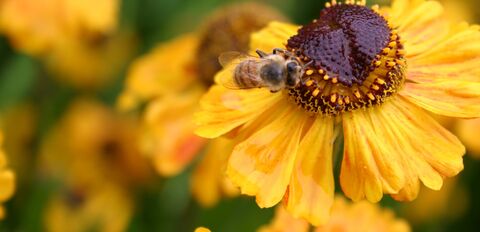
Changes to protected spaces
Fields in Trust’s protection safeguards against non-recreational development, meaning protected parks and green spaces are there for the benefit of communities and the environment forever.
But we understand there may be times when landowners need to make changes to meet the recreational needs of communities, so our protections are designed to be flexible.
We believe in a light touch approach to our stewardship, leaving the landowner to get on with managing their protected green spaces and only getting involved if they wish to make changes that require our consent. Here’s how it works in practice...
Maintaining protected spaces
Responsibility for the management and maintenance of a park sits with the landowner - often the local authority or the local town or parish council.
We hope that protected spaces are well maintained but we know it can vary considerably from place to place, especially with many local authorities experiencing budget cuts in this area. If you have any concerns about the way your local park or green space is being managed, the landowner is your best first port of call.
Many parks and green spaces have active Friends groups who help with essential tasks such as keeping the park clean and managing planting. If you'd like to get more involved, go to our take action page to find out a bit more or check if there is a local Friends group you can join. You can often find their details on park noticeboards or on social media, or you can speak to the National Federation of Parks and Green Spaces who oversee all Friends groups.
Changes that don’t require Fields in Trust’s involvement
We believe that the landowners who protect with us are best placed to manage their green spaces. There are many actions which can be undertaken without our involvement, including changing or adding the following:
- The recreational mix of facilities, for example adding a skate park or an artificial sports pitch or taking away facilities that are no longer required
- Sports pavilions
- Storage containers for equipment to be used on the space
- Cafes
- Pathways for walking and cycling, including those which will be used for traversing a green space
- Community orchards and general planting, maintenance and felling of trees
- Licences to sports clubs which give the clubs use of a facility at specific times
Changes that do require Fields in Trust’s involvement
We will get involved when a landowner wants to make certain changes, including:
- Extending a car park
- Changing the use of a building
- Certain types of fencing that completely restrict public access
- Granting an easement to a company who needs to do work on the space, for example laying a water pipe
- Giving a sports club exclusive use of a facility through a lease
If a landowner wants to carry out any of the above, they will need to submit a ‘change request’ to us, explaining the benefits of their proposal, whether there has been any opposition and, if so, how they have dealt with objections. Our Trustees will then consider the request carefully before approving or rejecting it.
What should I do if I’m concerned about potential changes to my local park?
We understand that not all changes meet with universal approval. If you’re not happy with a new plan for your local protected space, we strongly recommend you engage with the landowner in the first instance.
Many of these changes will also require planning permission so this public process is another opportunity for you to have your say. Our take action page gives lots of advice and tips on the planning process, consultations and opposing changes.
Have your voice heard

How to help your local parks and green spaces
Learn more about how green space decisions are made in your area and how you can get involved.

Email your MP
Urge your local MP to add their name to our Park Protector Pledge.

Get Involved
Explore the many ways you can get involved to help protect the future of our parks and green spaces.
